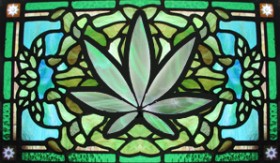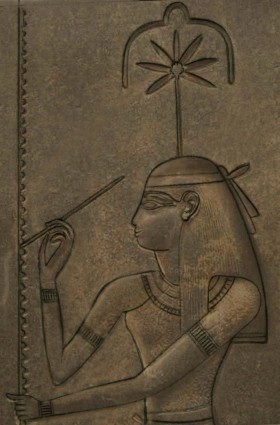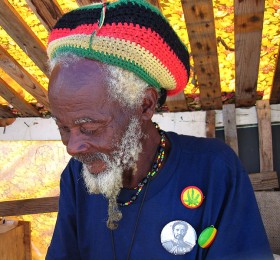Despite its bad rep as a munchies inducing, motivation stealing recreational drug, cannabis is considered by many a sacred plant.

Cannabis usage has played – and continues to play — a prominent role in numerous religions around the world. Given the highly perishable nature of plants, it is impossible to know for sure when human usage of marijuana began for any purpose or when / where it became domesticated. But archaeological research provides some clues. The earliest archaeological evidence indicates hemp cultivation began in modern-day China by 4,000 B.C. while other excavations in Northwestern China suggest shamans were utilizing marijuana for medicinal and/or religious purposes by 2,500 B.C.
But archaeological evidence can only give us hints to the reasons and places cannabis was first used. Ancient texts provide indisputable evidence of the prominent role it played in various religions. For example, in modern-day India cannabis was identified as one of five sacred plants by 2000- 1400 B.C. when the Atharvaveda, one of Hinduism’s sacred texts, was written. Other ancient texts document spread past Asia before the turn of the millennia, including texts written by the Greek historian Herodotus. Likewise, it played an important role in other ancient religions, such as Egyptians polytheistic tradition. Seshat was the Ancient Egyptian goddess of wisdom, knowledge, and writing… and cannabis?

Seshat, Egyptian Goddess of Wisdom, Knowledge…and Cannabis?
In areas without written documentation where no archaeological evidence has yet to be found – or at least published in a manner easily accessible to those outside of the academic sphere where a lot of archaeological research is isolated – we are left to depend on oral histories and the records left by early colonial agents. The earliest documented cannabis usage in Africa comes from such agents who discussed the numerous hemp-cults which had arisen in various areas by the late 1800’s A.D. As the Abrahamic religions – Judaism, Christianity and Islam – spread internationally, using cannabis in ceremonial and otherwise religious contexts often died out as all three discourage using intoxicants, which cannabis is generally considered to be.
But not all followers of these prominent global religious believe it to be an evil herb; countless individuals and groups utilize the mind-freeing benefits of marijuana in religious contexts today. Modern day examples include the internationally-recognized Rastafarian movement (which is considered an Abrahamic religion as well) and many smaller groups such as THC Ministry and The Way of Infinite Harmony.

Rastaman in Barbados, wearing the Rastafarian colors of green, gold, red and black on a rastacap. (Wikipedia)
Of course, individuals without affiliation to any religious movement also use cannabis to explore and deepen their spirituality. Given the individualistic and generally unstructured nature of such practices, they are difficult to document and explore. So in this series we’ll focus on exploring group-sanctioned cannabis usage in sacred contexts from prehistory to modern times.









